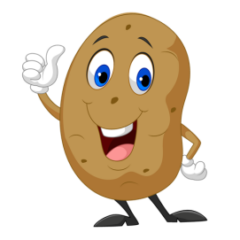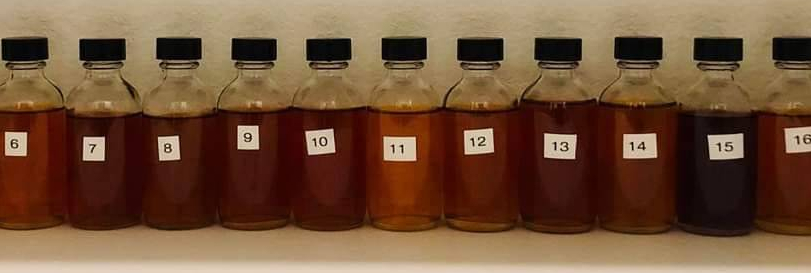Time for another drinking for science post. This time it’s a blind tasting conducted within the Houston Bourbon Society, HBS, with 15 tasters of 18 straight whiskies. This is the 3rd time I’ve done a blind tasting with this group. Here is a link that covers previous blind tastings – https://tater-talk.com/2018/01/23/blind-tasting-of-20-american-whiskies/. This time when I recruited the tasters I specifically ask for volunteers that had not participated in the previous 2 blind tastings. HBS has over 6,000 members and if you are a part of this group you’re likely a bourbon enthusiast so you know a little more than the average consumer. Are these folks expert tasters? Perhaps or perhaps they represent and score whiskies like the average bourbon enthusiast.
In the past blind tastings, I’ve used a 100 point scale system. In this system most whiskies score in the 60-100 point range and so below 60 becomes meaningless. This time I switched to a more simple 0-5 scale, with 5 points being the best whiskey possible and 0 points being the worst. 2.5 points would be the middle of the road. Tasters scored each whiskey in either whole or half points. Tasters turned in scores of 3 whiskies each week, so this tasting lasted 6 weeks. I instructed the tasters to score each whiskey on its own, preferably tasted on different nights.
The theme of this tasting was straight whiskies; specifically Straight Bourbon or Straight Rye. Whiskies that are finished in a secondary cask that previously held wine or another spirit are no longer straight whiskies and did not qualify for inclusion. Straight Whiskies are the product of only 1 state and aged at least 2 years. I also tried to keep the proof range much narrower than in my previous blind tastings. This time the lowest proof was 90 and the highest proof was 116.8.
The results:

Sorted by Median:

link to graphs in larger format – https://photos.app.goo.gl/UgurGZBgge83ErFt8
So should you draw some sort of line at the top and never try any whiskey below that line? Keep in mind that for every one of the whiskies at least one of the 15 tasters scored it 3.5 points, meaning they really liked it. You like what you like; it does not matter if this particular groups overall score is lower than you expected. For example, I particularly enjoy OF Rye which scored very poorly; I’m still going to buy another bottle, and soon as my open bottle is finished.
Most of the whiskies selected are current versions purchased right before this tasting began. The GB Balmorhea were 2 375ml bottles, which I have been told was the first batch. Barrell Bourbon HBS Mr Blue was a 14 year pick of TN Straight Bourbon done in 2018. The OWA bottle was from my bunker; I included this as a thanks to the volunteer tasters for their time. They were a great group providing very good tasting notes and completing scores on time each week.
My personal observations are current Wild Turkey Rare Breed is a great Straight Bourbon, easy to find and at a reasonable price. Henry McKenna, at least the normal single barrel that us every day folks randomly buy off the shelf, is a solid bourbon, but it’s not the world’s best whiskey no matter what some asinine award show proclaims.


This is at least your second examination in which Rare Breed has performed well. Really says something!
Why did you mix Rye and Bourbon in the same blind tasting?
I didn’t. I mixed Straight Bourbon and Straight Rye, which are the 2 most sold American whiskey types.
You posted in part, “So should you draw some sort of line at the top and never try any whiskey below that line?” My answer: Nope. Try them all; you may find something nobody else likes so you can always find it. For instance, In SBS’s and in reaching for stuff on the shelf, I’d put Baker’s, 4RSmBSelect, and OFRye in the upper half. Old Bardstown Estate Bottled, however IMHO, deserves its bottom spot, so buy all you want. [smile]